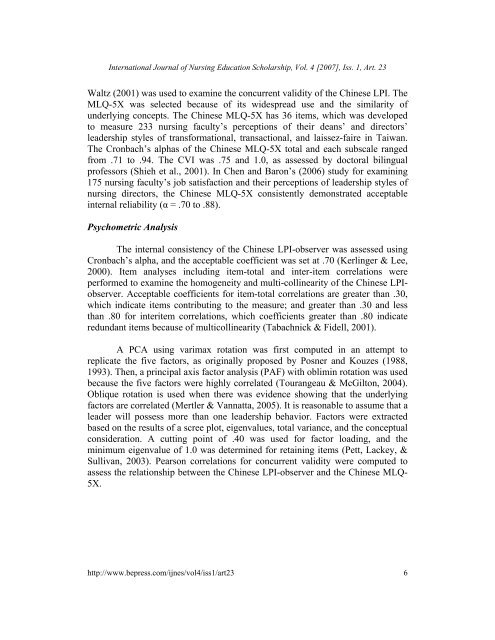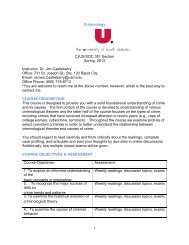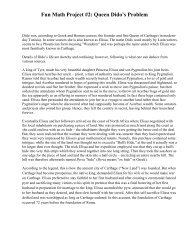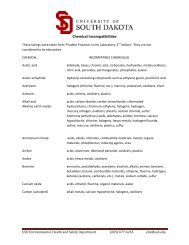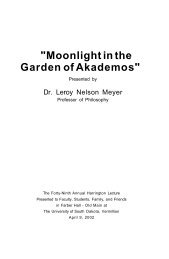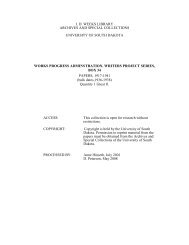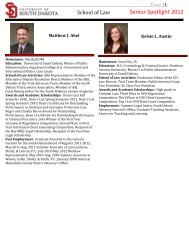Psychometric Properties of the Chinese Leadership Practices ...
Psychometric Properties of the Chinese Leadership Practices ...
Psychometric Properties of the Chinese Leadership Practices ...
You also want an ePaper? Increase the reach of your titles
YUMPU automatically turns print PDFs into web optimized ePapers that Google loves.
International Journal <strong>of</strong> Nursing Education Scholarship, Vol. 4 [2007], Iss. 1, Art. 23<br />
Waltz (2001) was used to examine <strong>the</strong> concurrent validity <strong>of</strong> <strong>the</strong> <strong>Chinese</strong> LPI. The<br />
MLQ-5X was selected because <strong>of</strong> its widespread use and <strong>the</strong> similarity <strong>of</strong><br />
underlying concepts. The <strong>Chinese</strong> MLQ-5X has 36 items, which was developed<br />
to measure 233 nursing faculty’s perceptions <strong>of</strong> <strong>the</strong>ir deans’ and directors’<br />
leadership styles <strong>of</strong> transformational, transactional, and laissez-faire in Taiwan.<br />
The Cronbach’s alphas <strong>of</strong> <strong>the</strong> <strong>Chinese</strong> MLQ-5X total and each subscale ranged<br />
from .71 to .94. The CVI was .75 and 1.0, as assessed by doctoral bilingual<br />
pr<strong>of</strong>essors (Shieh et al., 2001). In Chen and Baron’s (2006) study for examining<br />
175 nursing faculty’s job satisfaction and <strong>the</strong>ir perceptions <strong>of</strong> leadership styles <strong>of</strong><br />
nursing directors, <strong>the</strong> <strong>Chinese</strong> MLQ-5X consistently demonstrated acceptable<br />
internal reliability (α = .70 to .88).<br />
<strong>Psychometric</strong> Analysis<br />
The internal consistency <strong>of</strong> <strong>the</strong> <strong>Chinese</strong> LPI-observer was assessed using<br />
Cronbach’s alpha, and <strong>the</strong> acceptable coefficient was set at .70 (Kerlinger & Lee,<br />
2000). Item analyses including item-total and inter-item correlations were<br />
performed to examine <strong>the</strong> homogeneity and multi-collinearity <strong>of</strong> <strong>the</strong> <strong>Chinese</strong> LPIobserver.<br />
Acceptable coefficients for item-total correlations are greater than .30,<br />
which indicate items contributing to <strong>the</strong> measure; and greater than .30 and less<br />
than .80 for interitem correlations, which coefficients greater than .80 indicate<br />
redundant items because <strong>of</strong> multicollinearity (Tabachnick & Fidell, 2001).<br />
A PCA using varimax rotation was first computed in an attempt to<br />
replicate <strong>the</strong> five factors, as originally proposed by Posner and Kouzes (1988,<br />
1993). Then, a principal axis factor analysis (PAF) with oblimin rotation was used<br />
because <strong>the</strong> five factors were highly correlated (Tourangeau & McGilton, 2004).<br />
Oblique rotation is used when <strong>the</strong>re was evidence showing that <strong>the</strong> underlying<br />
factors are correlated (Mertler & Vannatta, 2005). It is reasonable to assume that a<br />
leader will possess more than one leadership behavior. Factors were extracted<br />
based on <strong>the</strong> results <strong>of</strong> a scree plot, eigenvalues, total variance, and <strong>the</strong> conceptual<br />
consideration. A cutting point <strong>of</strong> .40 was used for factor loading, and <strong>the</strong><br />
minimum eigenvalue <strong>of</strong> 1.0 was determined for retaining items (Pett, Lackey, &<br />
Sullivan, 2003). Pearson correlations for concurrent validity were computed to<br />
assess <strong>the</strong> relationship between <strong>the</strong> <strong>Chinese</strong> LPI-observer and <strong>the</strong> <strong>Chinese</strong> MLQ-<br />
5X.<br />
http://www.bepress.com/ijnes/vol4/iss1/art23<br />
6


